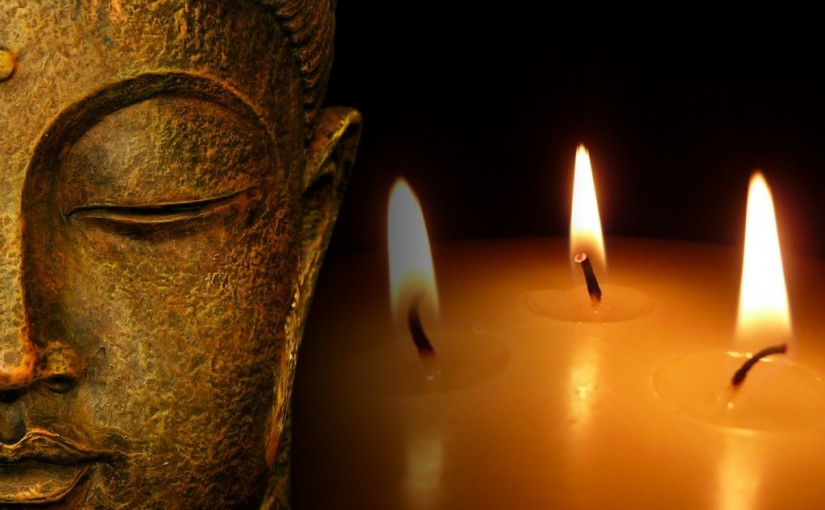This article is a follow up to my post "The Transformative Effects of Meditation," published on Oct. 22. This article features not only my experience with meditation but also three Bucknell students' and one Lewisburg resident's insight about the practice.
As promised, here is my follow up to my challenge of practicing meditation for a week. I was warned that there wouldn’t be any life changing results so I tried to pay attention to small changes in my mind and body. Here is what I noticed after meditating for 15 to 20 minutes every day:
- Peace of mind
- Happier
- General sense of wellbeing
- More appreciative of life and those in it
- Fell asleep a lot faster and slept better throughout the night – however, I am not sure if I can completely attribute that to meditating or other changes I have been making
- Detached from habitual thought patterns – especially negative ones.
- More balanced perspective
I also experimented with different times throughout the day to meditate and discovered that my morning meditation is the most fruitful for me.In the afternoon or evening, I became easily distracted, often thinking about what I was going to eat for dinner or what everyone else was up to. In the morning, my awakened consciousness had not yet been agitated and engaged in the daily business of life. Nature’s tranquility- the air, the light, the sounds – generates a harmony that resonated well with me. Additionally, I enjoyed starting my day with stillness because it set a focused, optimistic, and magnanimous tone for the rest of my day.
My biggest challenge was clearing my mind. However, Jason, the professor I interviewed in a previous post, told me that this is completely normal. I realized this practice can be hard work and it will take time to achieve successful meditations. Some people spend years trying to reach Nirvana – the ultimate goal of meditation. According to Professor Young, the professor of Religious Studies who has a concentration in Buddhism, people who meditate see Nirvana as their extremely distant goal. For many, the more intimate goal of meditators is to “live with compassion and friendliness” – this is what I was aiming for. No wonder Young believes that the happiness index of the Buddhist culture rates higher than others.
To learn more and compare my experience, I asked some friends why they meditate and how it affects them.
Dianne (wife/mother, age 70, Lewisburg resident, began a daily meditation practice in 1973): If you want to explore the innermost parts of your mind and ascertain who you really are, there is no more ideal a method than meditation. Deep relaxation, introspection or psychotherapy are not enough. Only the depth and solitude of meditation leads you to use an aspect of consciousness that does not cling to external forms and that transcends the senses and thought. Some call these states superconsciousness, or oneness, or enlightenment. These names do not matter. All that matters is getting to a state of transcendence. Even a glimpse is powerful and trans-formative and makes you thirst for more.
Alex Silverman (Senior, Psychology Major): I’ve been a meditator for almost a year now. I practice transcendental meditation, a meditation technique brought over from India by a man named Maharishi Yogi in the 60’s. Transcendental meditation involves the use of a mantra that is uniquely assigned to each individual who practices by a certified transcendental meditation teacher. It is a simple and easy practice that simply involves the silent repetition of the mantra with the eyes closed. The idea is that the recitation and repetition of the mantra brings the mind to its quietest state, below the level of conscious awareness. It is typically practiced for twenty minutes twice a day for maximum benefits- once in the morning before you begin your day and once before the start of your evening. However, with my crazy busy schedule, I’m lucky if I get to meditate once a day.
I sought out transcendental meditation when I was going through a rough time. I needed to find some way to rejuvenate both my mind and my body. Practicing transcendental meditation for just twenty minutes actually allows your mind to rest more than it does in an average nights sleep, consequently allowing your body to physiologically replenish itself. After just a few days of practice, I could actually feel the difference! I was happier and more energized because I was giving my mind and body the chance to get the rest they deservingly needed.
I’ve recommended transcendental meditation to several people who are near and dear to me, simply because I think it is the most useful technique anyone can have, regardless of how the practice is picked up. You don’t have to be going through a hard time to learn how to meditate. Your mind and body need rest! Anyone and everyone who picks up this practice is astounded by the benefits- a clearer mind, more energy and more happiness. There are plenty of skeptics out there- I definitely was one at first. I can safely say, though, that TM has changed my life for the better and I’m so fortunate to have learned such a helpful practice.
Grace Elliott (Senior, Majoring in Education and Autism Studies): In high school I was very involved with mediation, reflecting on it now I wish I was still as focussed on it. I did a few different types but there were two general types I benefited from and enjoyed the most. These were focussed attention meditation and Vipassana meditation.
In focussed meditation you focus on an object, the object may be the breath, a mantra, visualization, part of the body or an external object. Any of these options work- but I personally like to focus on my breath as a way to get focussed or ‘unfocused’ if you would rather think about it that way and then focus on a visualization or an external object. In high school I went on a meditation trip every summer and my favorite was to Exuma in the Bahamas. On the trip we worked on rebuilding a church. But every morning before work, during lunch, and after work, we would go to the beach and meditate. I would either focus on the visualization of the ocean and the sound of the waves breaking. Or I would sit on the shore line and meditate on the feeling of the rising tide starting to surround me.
I also recommend Open Mindfulness to everyone. It seems more stiff but is just as rewarding. I took part in Vipassana meditation. In this mediation you focus on your breathing to develop full concentration then with this concentration you focus on any developing sensation while it comes and let it pass as you focus on your breath again. So you can consider breathing as the primary focus and any sensations- smells, sounds, feelings in your body as a secondary passing focus.
My senior year in high school I went to St. Leo’s Abbey in Florida and stayed in a monastery for 10 days. Here we meditated in the chapel with Monks and I did my version of Vipassana mediation. When they would be singing their chants I would be meditating on my breath and letting the side thoughts of the sound of their music, the sounds of books opening and closing, the sounds of shoes slowly clicking across the marble floor, and the chill of the air come through my mind as a secondary thought. Once I took it in and accepted it, it would pass again as I concentrated on my breath. I would recommend this to anyone because it can be a challenge- but one that is so rewarding once you settle in and relax into the rhythm of your breath and the passing thoughts and feelings you experience based off of the environment you’re in.
Both forms of meditation are extremely rewarding and a nice option because you can practice them anywhere!
Meghan Byrd (Senior, majoring in Political Science and Spanish): I first learned about mindfulness practices as a junior in high school as a way to help alleviate anxiety. In the past few years, due to my hectic schedule (I know, bad excuse), I began to notice that mindfulness wasn’t as present in my life as I’d like it to be. As Carly so aptly describes, mindfulness can not only help manage stress, but I find it to make me a happier, more positive person.


